What’s a Plan?
A Plan is a specific offering or bundle of your software and/or services at a certain price point. Plans can be set up with the following configurations:- Many bricks (Platform, Seats, API call volume, and optional bricks like Implementation Services)
- One brick (User Licenses)
- Zero bricks (the Plan gives access to the platform)
How to Create a Plan
Take me there
1
Navigate to Products and click the Product you want to add the Plan to.

2
Click New plan.

3
Fill in your new Plan’s name, definition, and summary.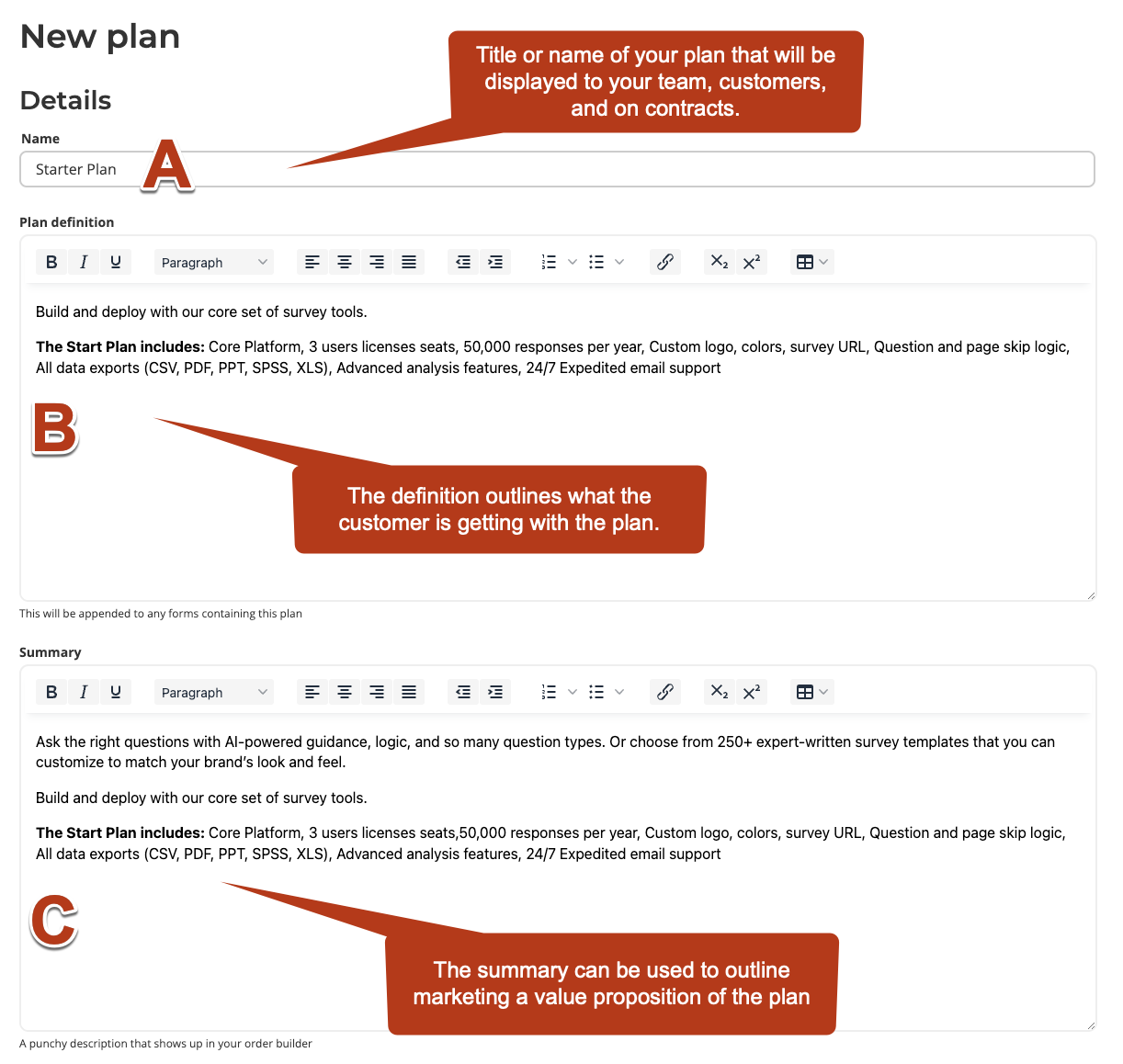
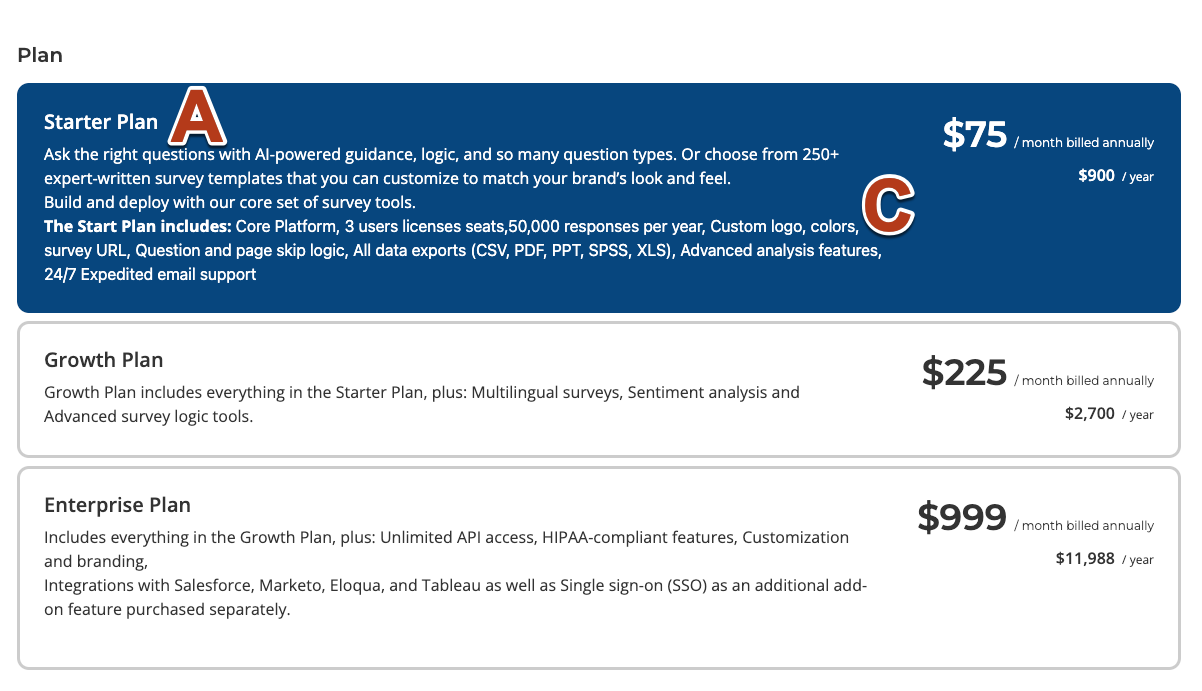
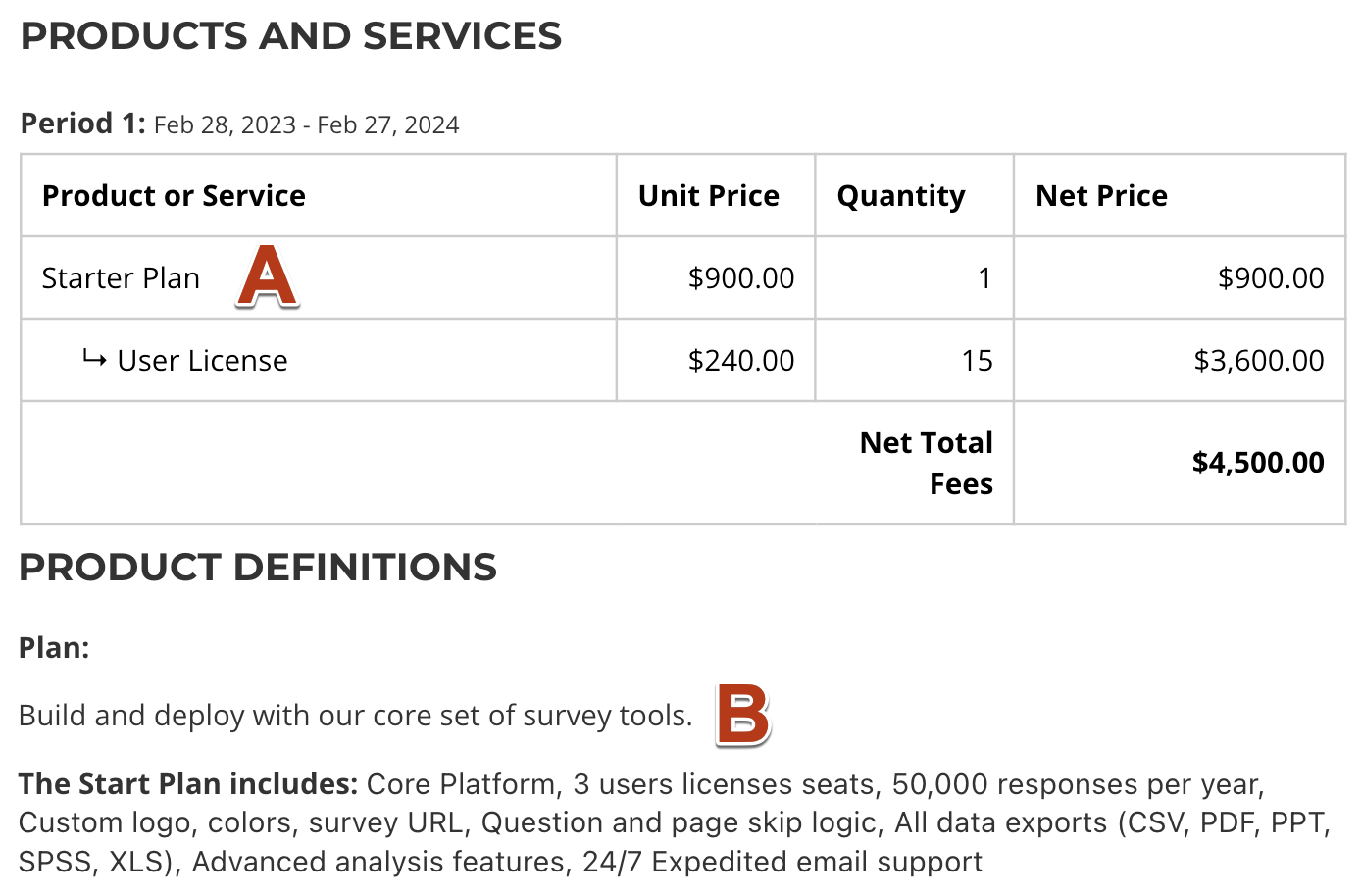
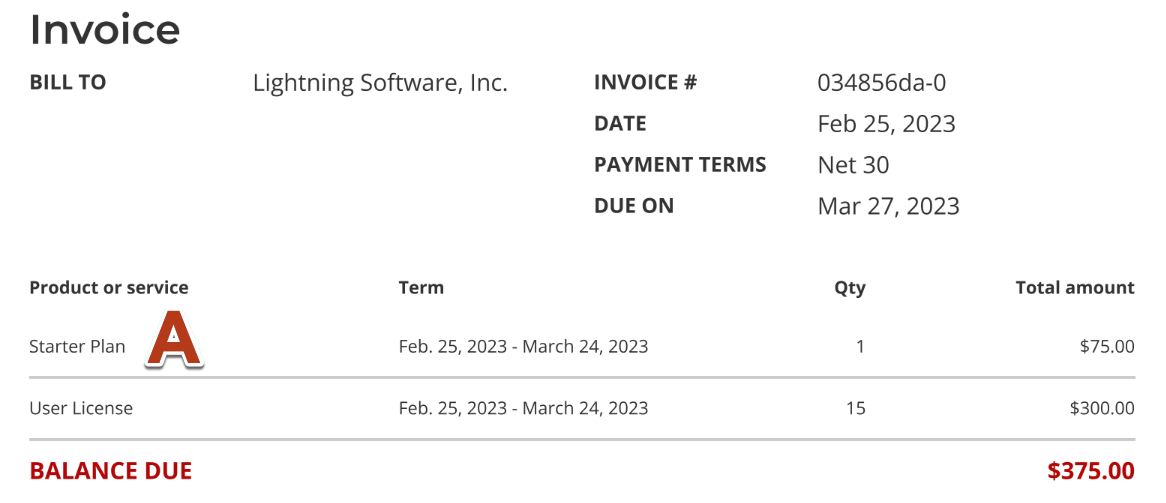




4
Input the plan pricing options.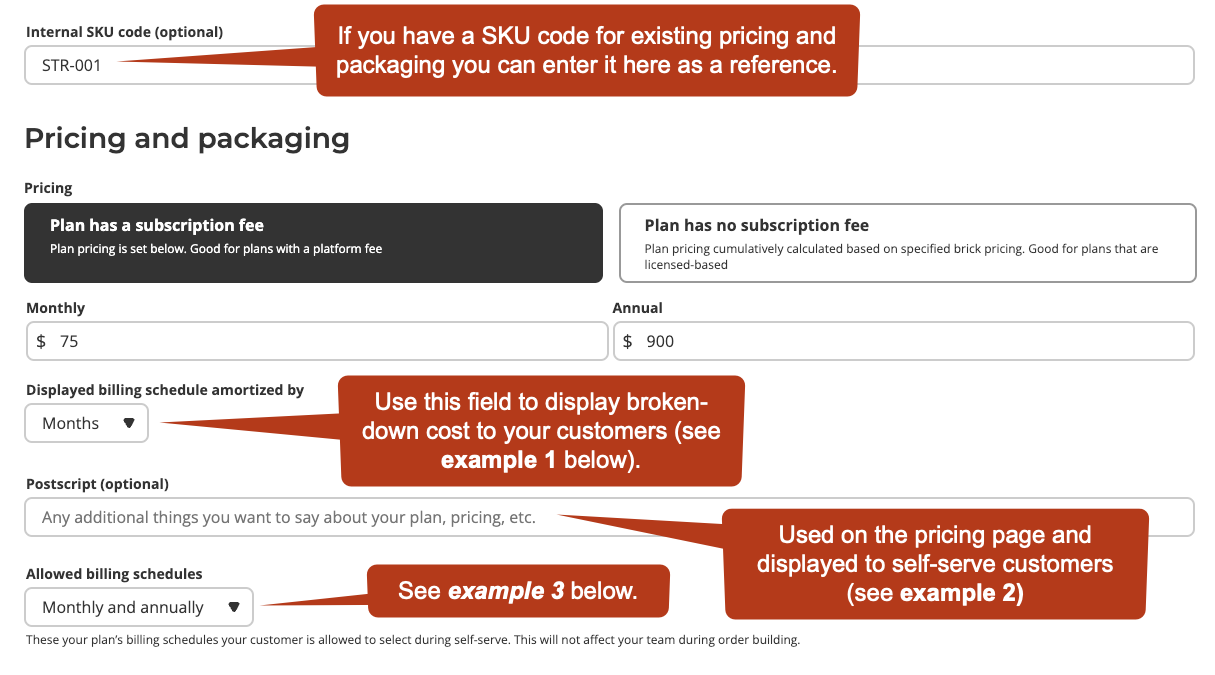




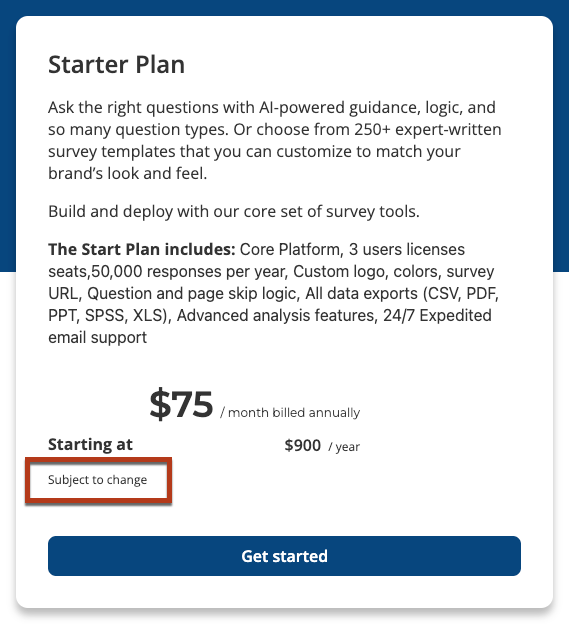
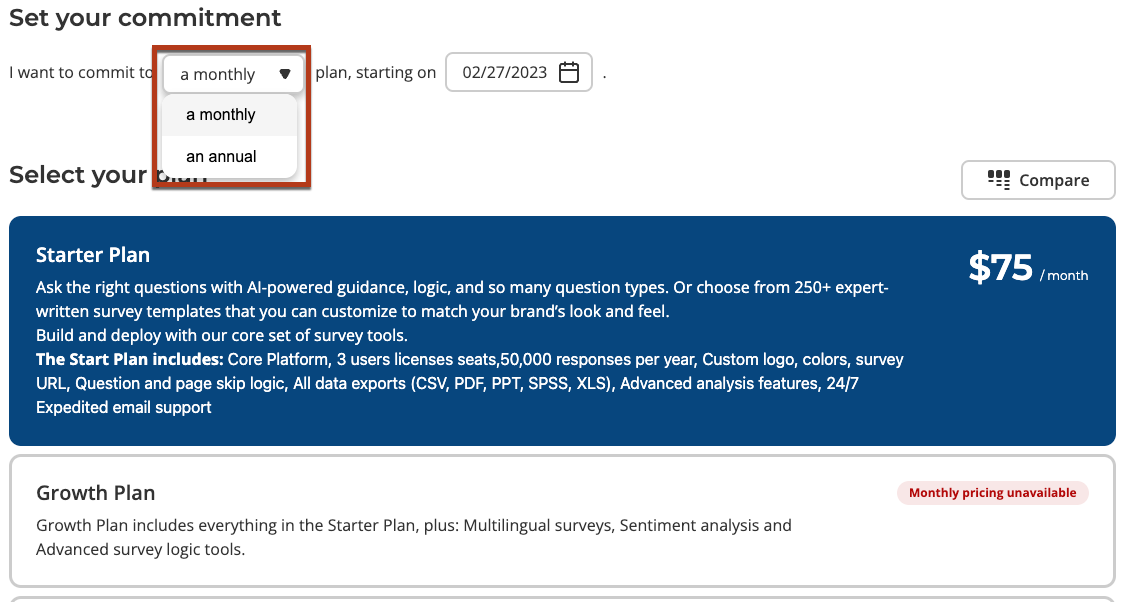







Do I have to include a Brick on my Plan?
It is not required to add Bricks to a Plan.However, if you are looking to include a quantity of units as part of the Plan (e.g. 5 user licenses included in the Plan price) and would like to charge per additional unit, you must include the unit Brick.5
Add Bricks.
1
Click Edit bricks.
2
To add additional Bricks, click the New brick button. Check out the Creating a Brick guide for details on the Brick builder.
3
Select the bricks to be added to the plan by clicking on them.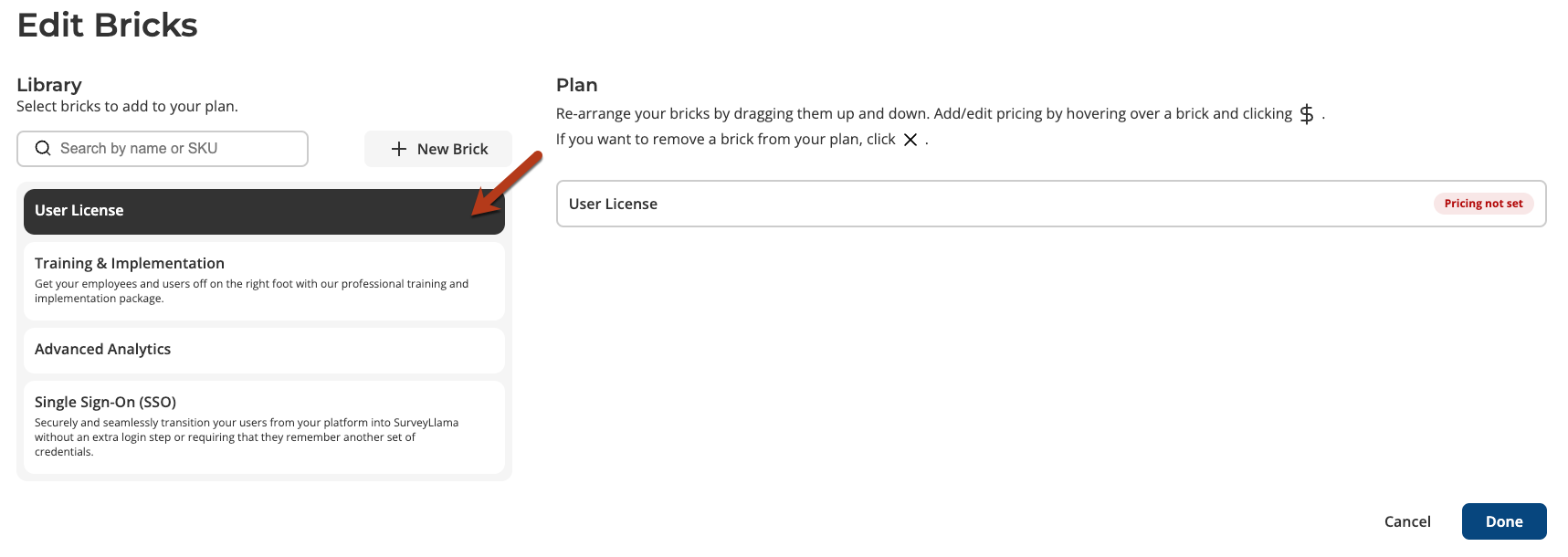

4
Hover over the Pricing not set and click on the dollar sign.

6
Configure your Brick pricing and packaging.See the section on Pricing Structures for guidance on structuring the pricing.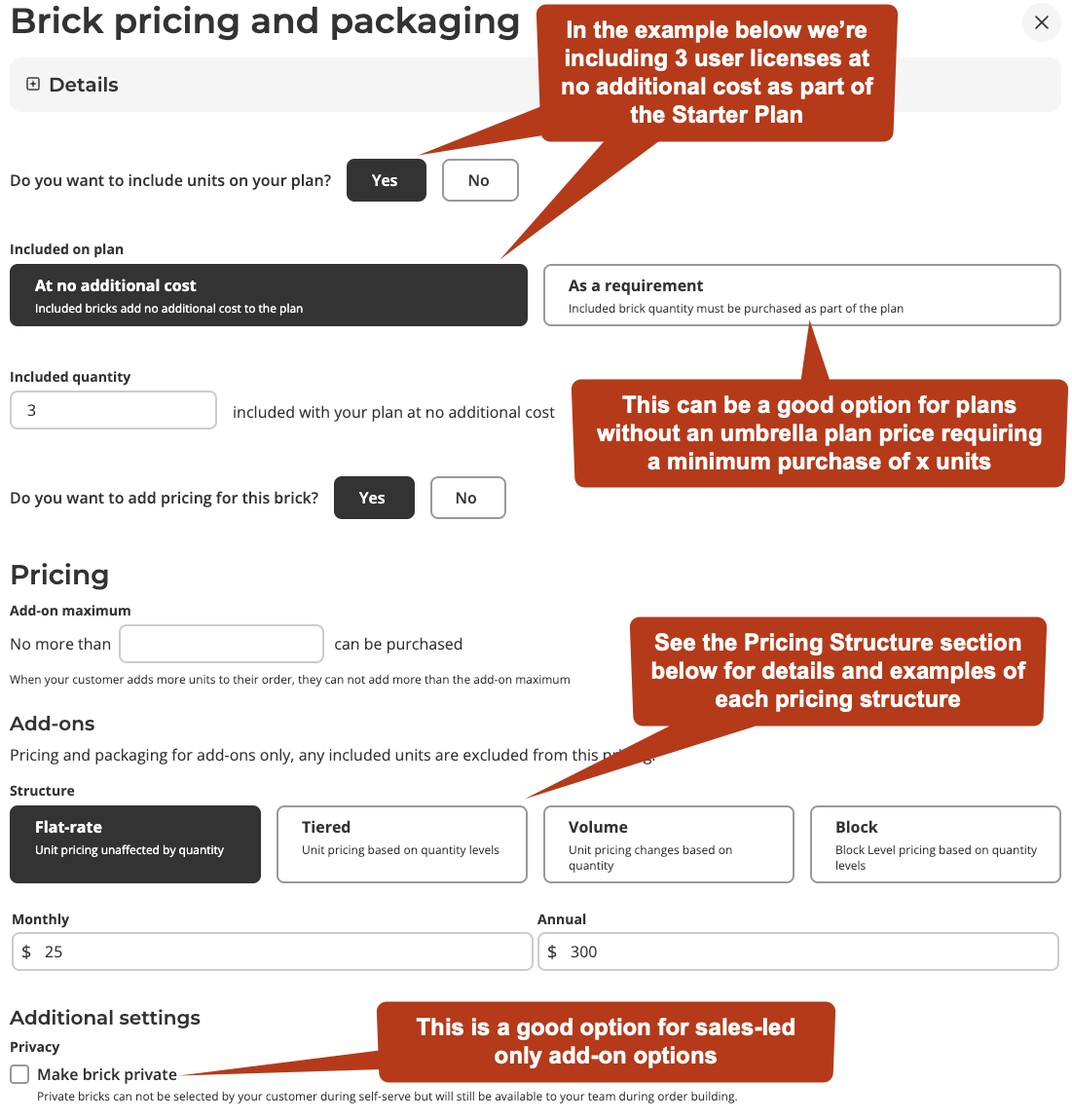

7
Once you’ve added all the Bricks to your Plan and configured pricing for each, click Done.
8
Decide if the plan should be private, and click Publish.Marking a Plan as private excludes it from any self-serve views and makes it available exclusively through your sales-led Orders.
9
One last important step!After publishing your Plan, don’t forget to go back into your product and click Activate. This will turn your product live for the world (or, at least your team and customers).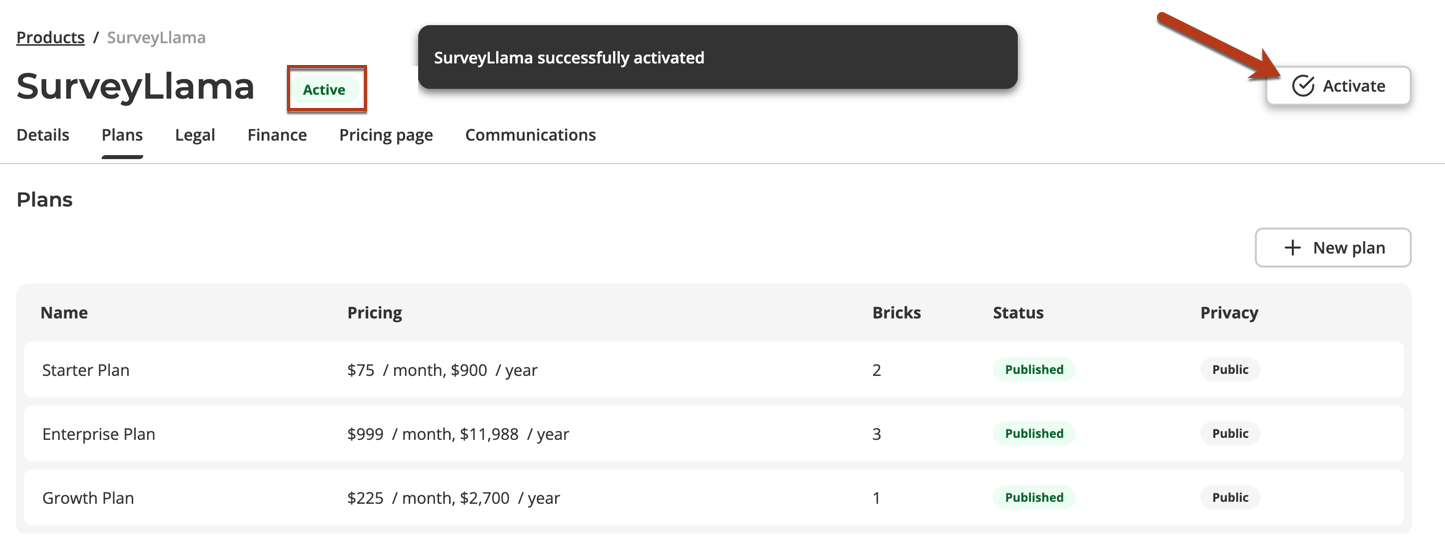

Pricing Structures
A pricing structure is a pre-defined discounting mechanism that is designed to incentivize customers as they purchase more of your Product. There are 4 pricing structures that can easily be designed in Salesbricks:Flat-rate
Flat-rate structure is used when you want to set the unit price equally, regardless of how many units your customer is buying.Flat-rate example - Buying apples 🍎
Flat-rate example - Buying apples 🍎
At the grocery store, each apple costs 50¢.Frank wants to buy 3 apples: .Rita wants to buy 100 apples: .Under flat-rate pricing, the 1st apple costs as much as the 100th apple, with no discount for having purchased a larger quantity.
Tiered
Tiered is a pricing structure where your customers are charged the sum of each tier as unit counts reach tier thresholds. In the example below, there are several pricing tiers and the buyer passes fully through the first two tiers and partially into the third. There are also five licenses included at no additional charge, which are taken from the highest tier.
Tiered example - Booking a hotel 🏨
Tiered example - Booking a hotel 🏨
Tiana wants to book a room at a hotel:
- The first two nights are priced at $100 per night.
- The next two nights are discounted at $80 per night.
- Any night after that is $50 per night.
Volume
Volume pricing is used when you want to provide a quantity discount for volume purchases, but want the discounted unit cost to be the same for all units in the Order.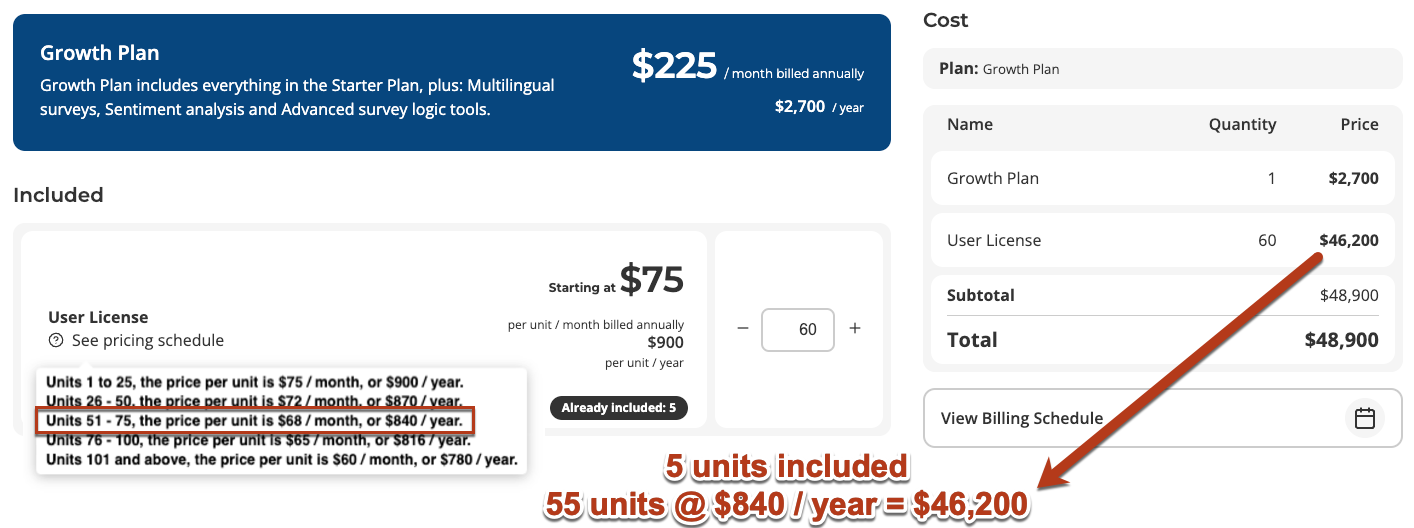
Volume example - Baseball game tickets ⚾
Volume example - Baseball game tickets ⚾
Vernon wants to buy tickets to a baseball game:
- 1-5 tickets: $50 per ticket
- 6-15 tickets: $40 per ticket
- 16-30 tickets: $25 per ticket
Block
Block structures are used when you want to sell your units in blocks instead of individually. Similar to buying eggs where you must purchase by the dozen (12, 24, 36, etc.), you can package your units together and sell them in blocks. This strategy can be useful if your buyer’s unit needs to fluctuate within a billing period, eliminating the need for upgrades or overages, assuming they stay within the block.Block example - Buying eggs 🥚
Block example - Buying eggs 🥚
Bob needs 16 eggs for his recipe.At the farmer’s market, eggs are sold by the dozen:
- 1 dozen: $5
- 2 dozen: $8
- 3 dozen: $10
